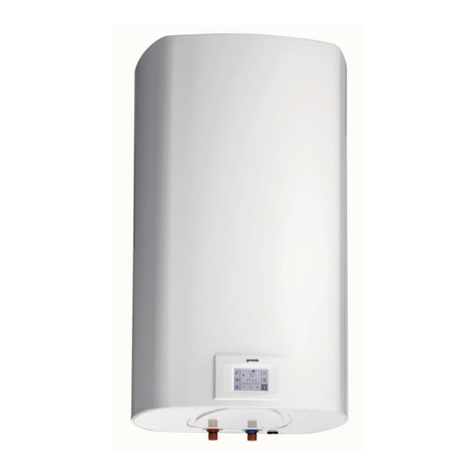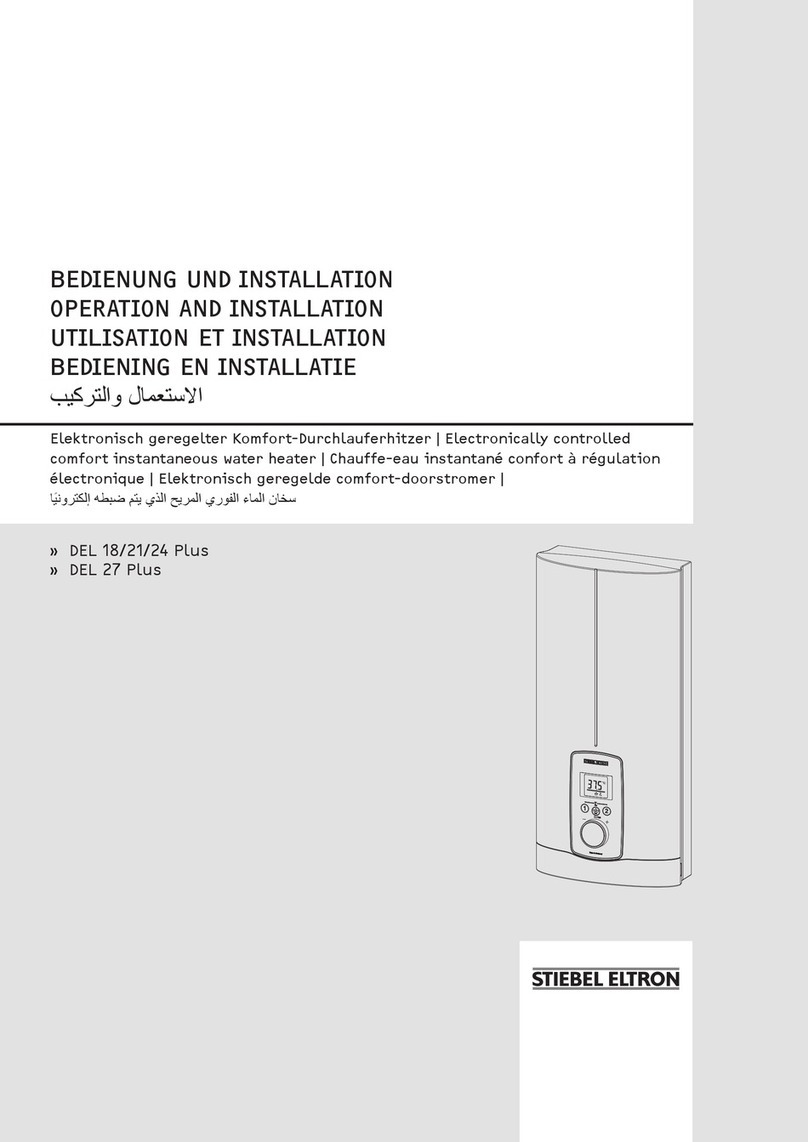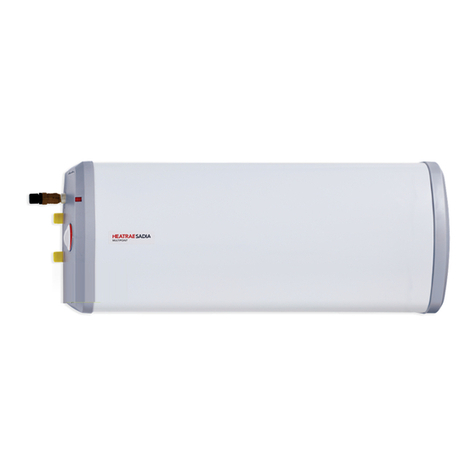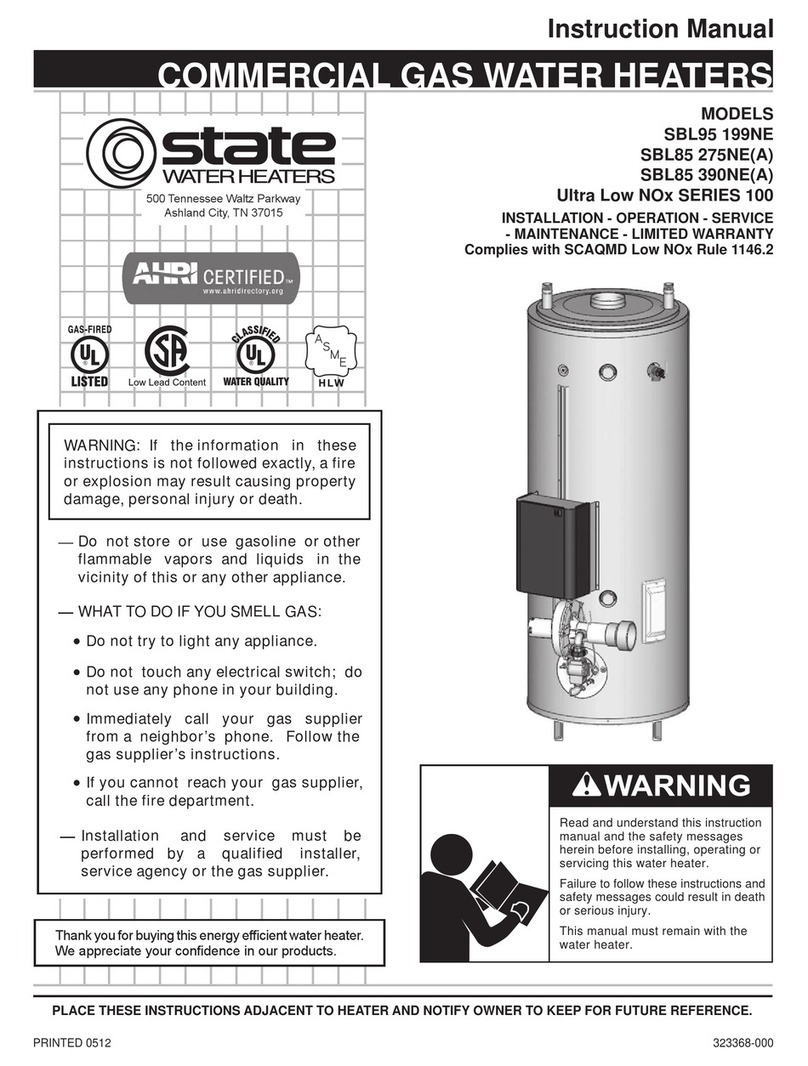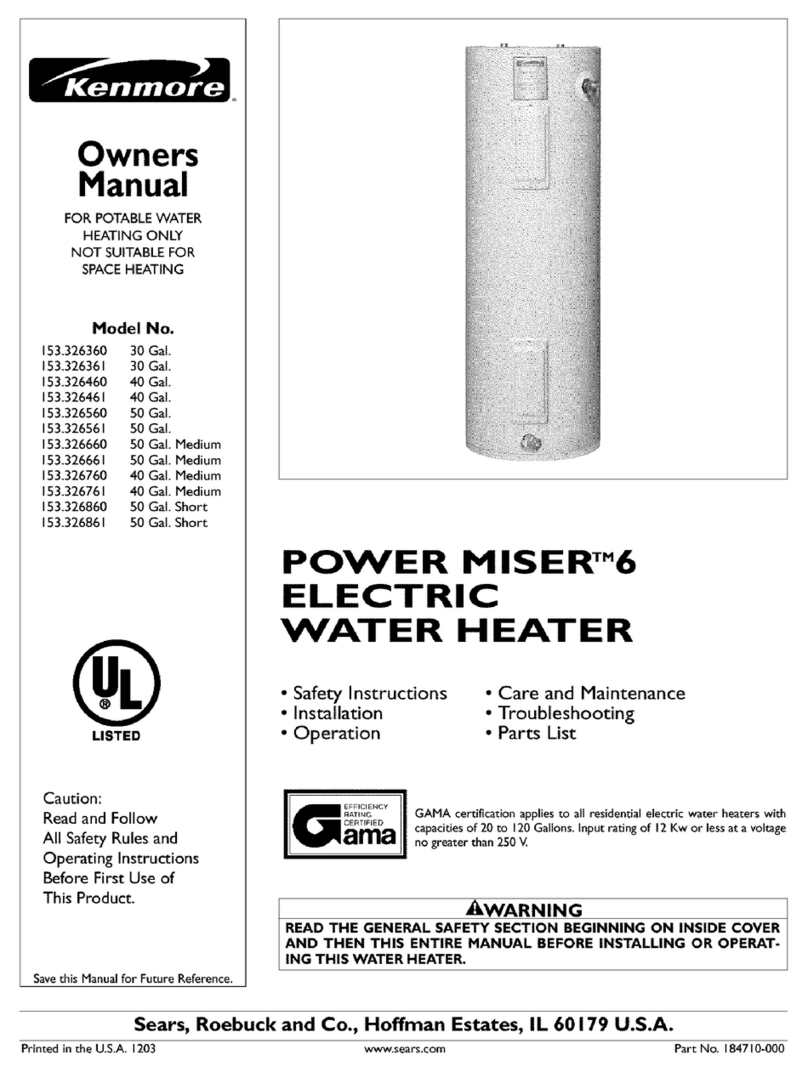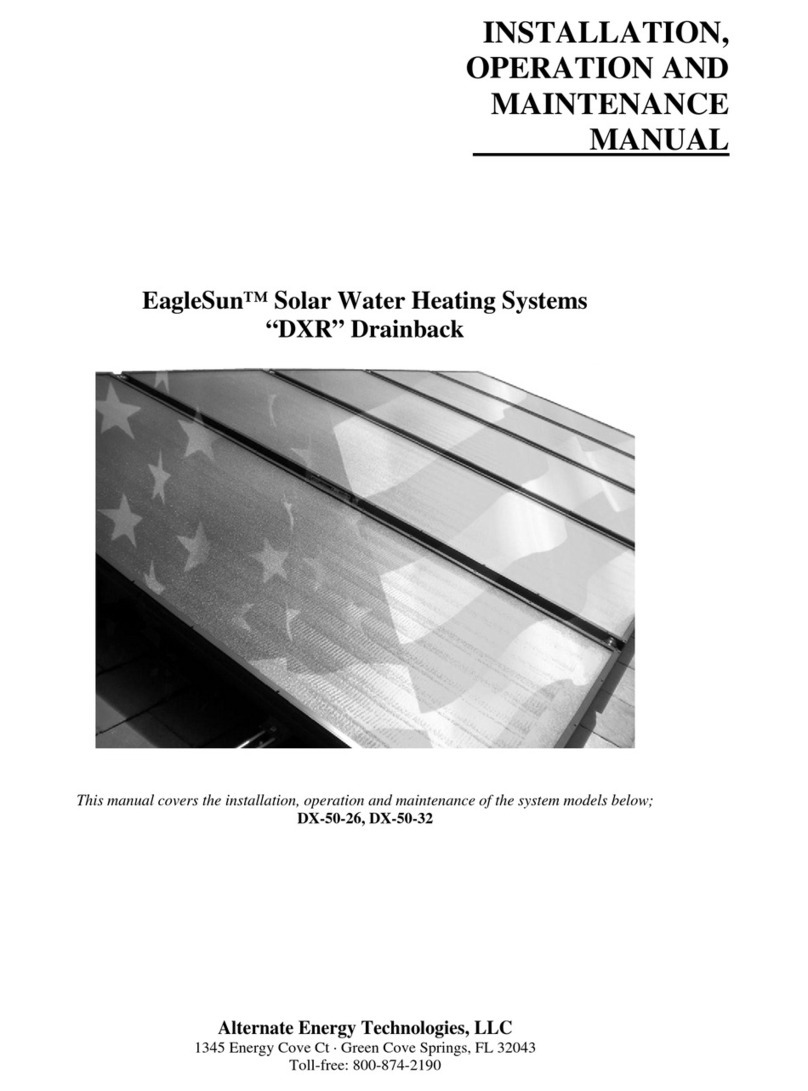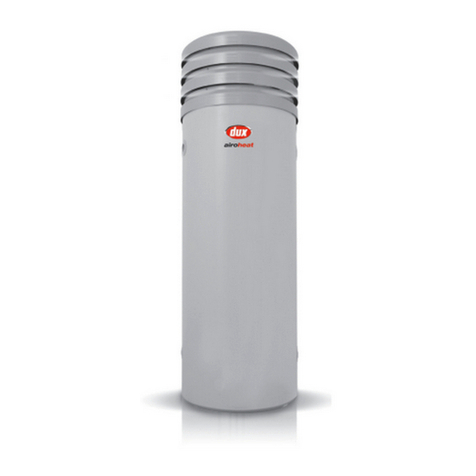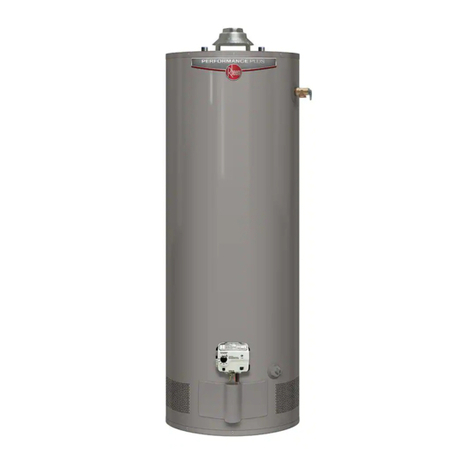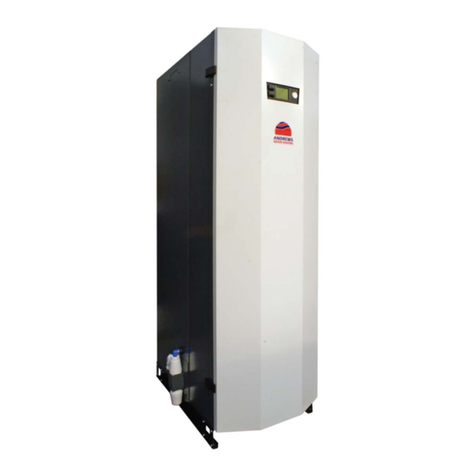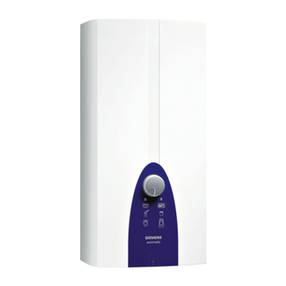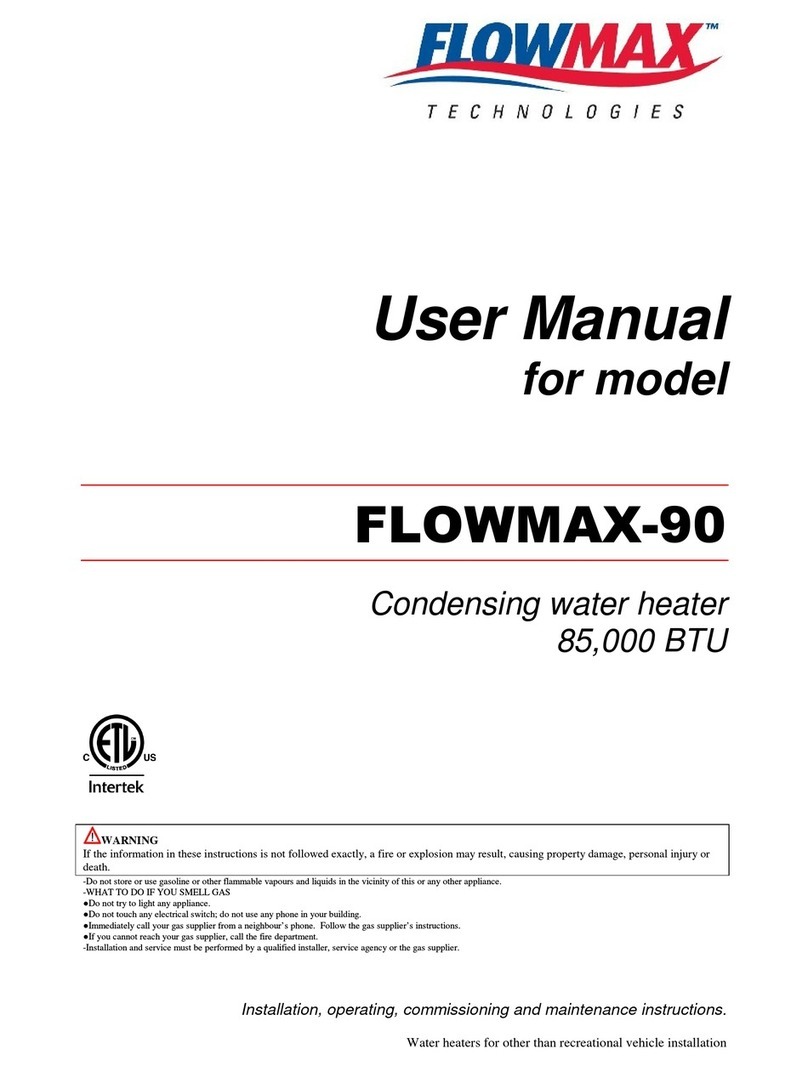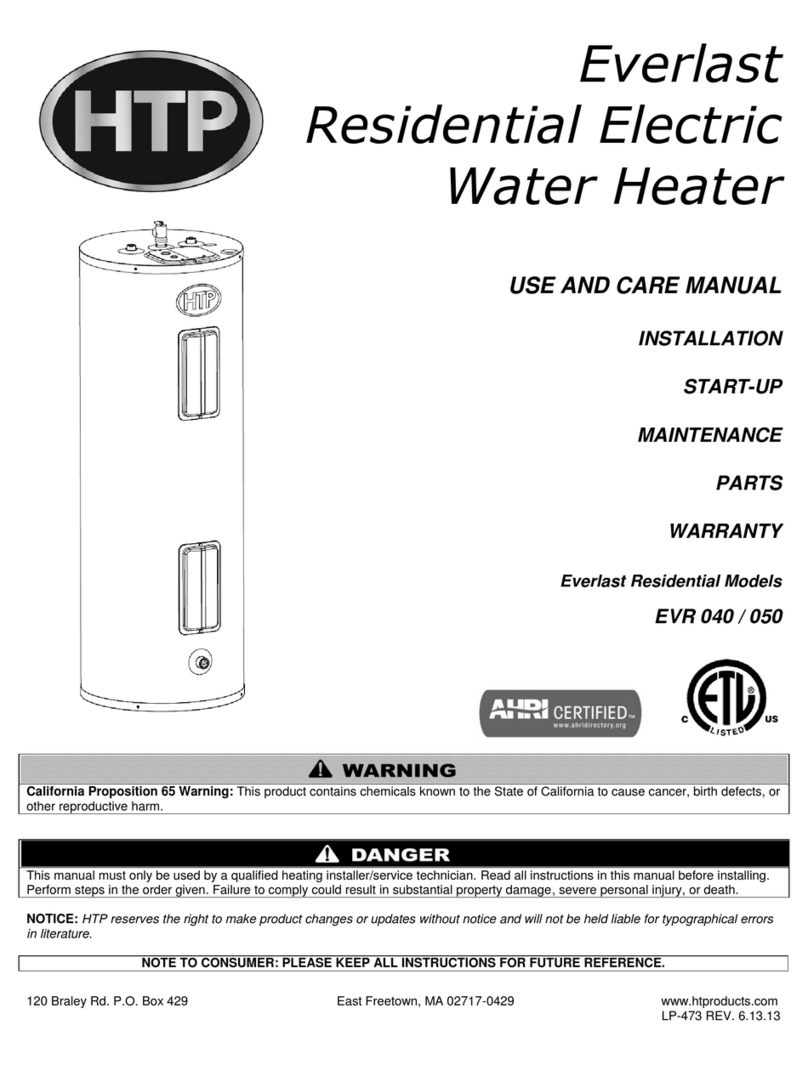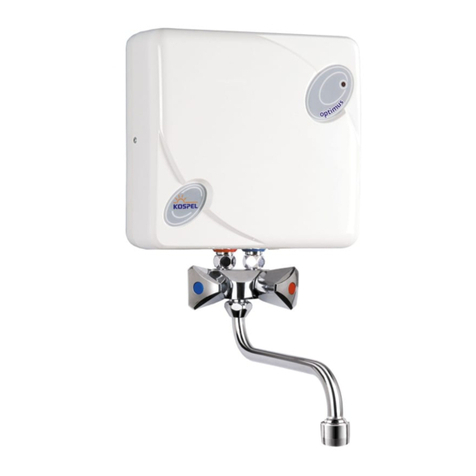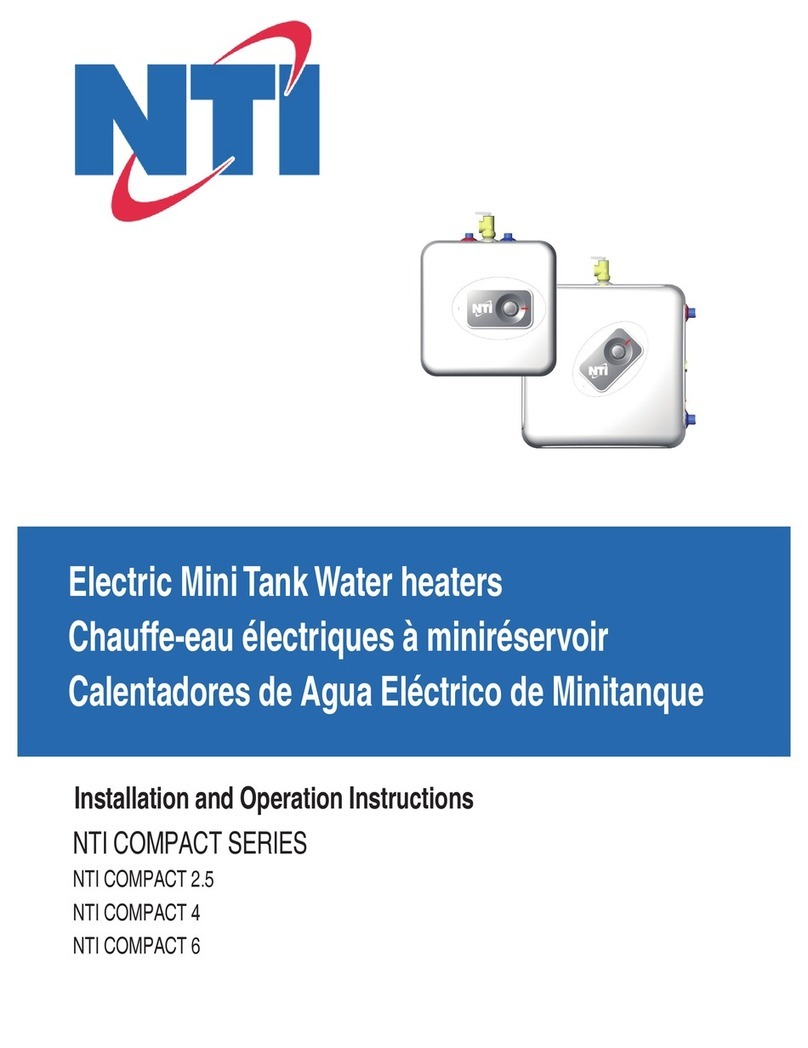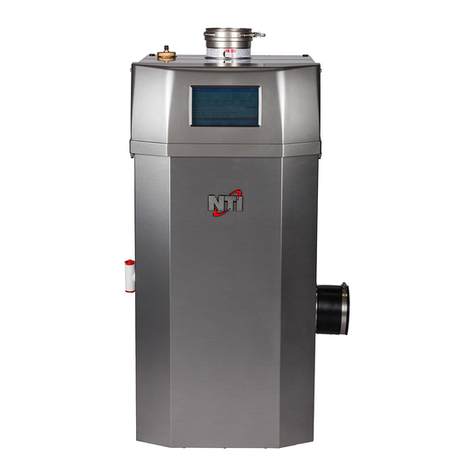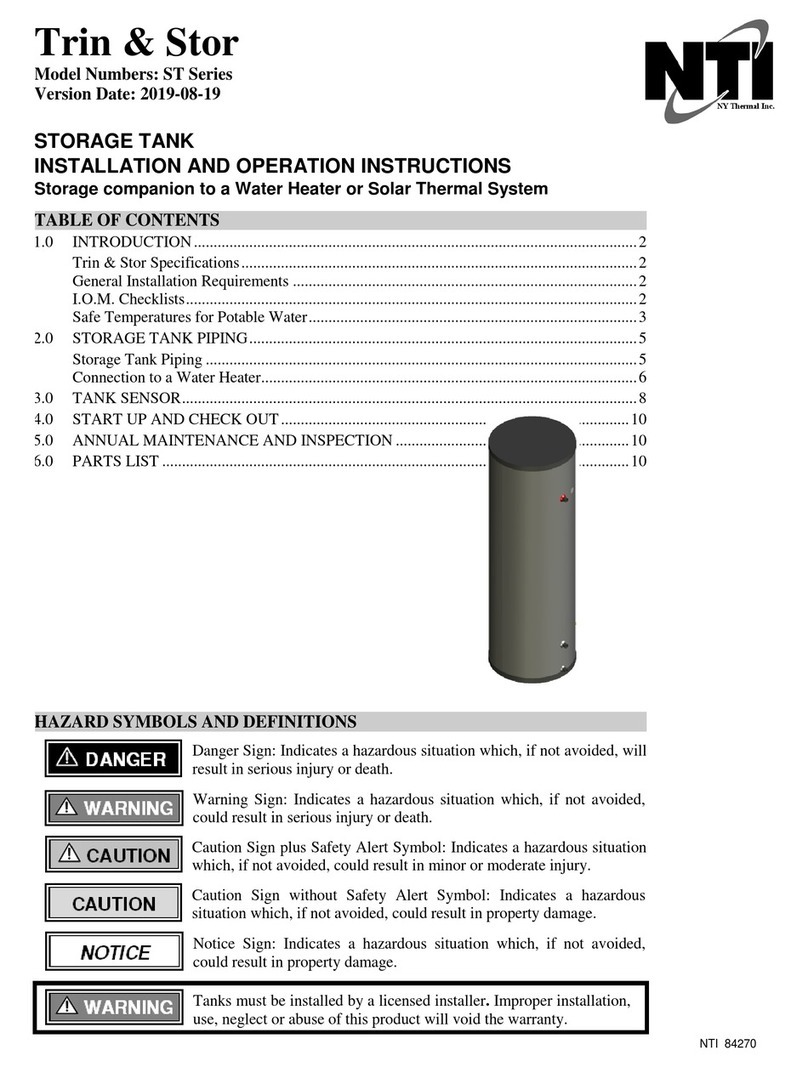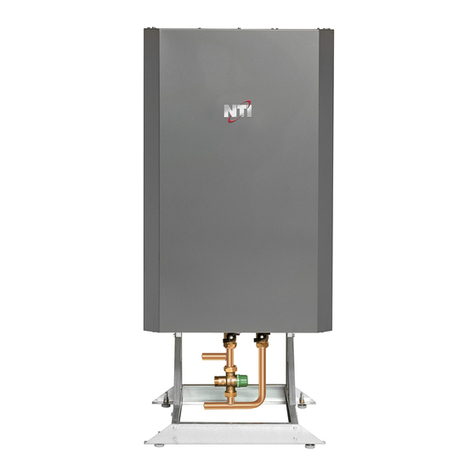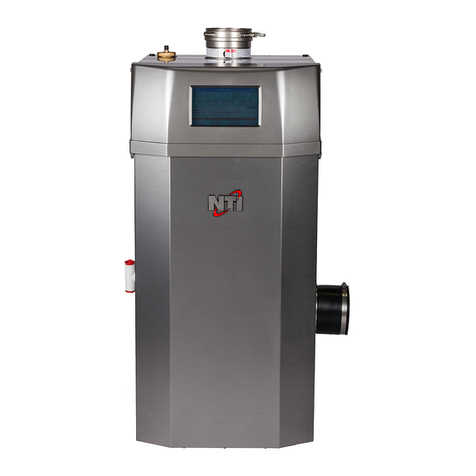
Indirect Water Heaters
Installation and Operation Instructions
Trin & Stor
5
Safe Temperatures for Potable Water
Two factors used to determine safe hot water temperatures are Legionella and scalding. Potable water needs to
be stored at temperatures hot enough to limit the growth of Legionella, yet be cool enough to prevent scalding.
Since both hazards present a potential risk to the user, they must be monitored and controlled. Table 1-3
indicates how water temperature affects Legionella bacteria and contributes to scald injury. Use of a thermostatic
mixing valve in the indirect water heater plumbing system can help protect against both of these hazards. By
storing potable water at higher temperatures, bacteria growth is controlled, while still providing high temperature
water for dishwasher applications and low temperature water for bathing. Before proceeding, read the following
carefully and take all necessary pre-cautions to avoid potential illness and/or injury that can result from
Legionella or scalding hazards.
Legionella Hazard - This bacteria is naturally occurring in surface water and ponds.
It
can also be found in man-made water systems around the world such as water storage
tanks, water distribution systems, fountains, hot tubs, humidification systems, refrigeration systems and grocery
produce misters. Health authorities agree that Legionella bacteria most often enter the lungs due to aspiration
when contaminated water spray is breathed in as opposed to ingesting drinking water contaminated with the
bacteria. Typical illnesses attributed to Legionella include flue like symptoms (Pontiac Fever) and a potentially
fatal type of pneumonia (Legionnaires’ disease). Failure to follow instructions may result in illness or death.
Contributing Factors to Legionella - Experts acknowledge that Legionella is an identified risk in most water
systems. Although eradicating Legionella is improbable, pre-cautions can be taken to control and monitor
conditions that promote bacteria growth. According to the World Health Organization (WHO); American
Society of Heating, Refrigeration, and Air-conditioning Engineers (ASHRAE); Canada Safety Council (CSC);
and Centers for Disease Control (CDC), contributing factors to the growth of Legionella in potable water
systems include:
•Minerals and nutrients present in the source water and systems materials
•Stagnation or low flow characteristic of dead ends in distribution piping systems and storage tanks
•Scale, corrosion, and bio film
•Tepid water in cold water lines
•Water storage temperatures optimal for bacteria growth
•Chlorine concentration
Scald Hazard - Hotter water increases the risk of scald injury. There is a hot water scald
potential if the storage tank thermostat is set too high. Before changing the temperature
setting on the tank thermostat, refer to the thermostat manufacturers recommended settings. Failure to follow
these instructions may result in serious injury or death.
A scald injury can occur when hot steam or liquid makes contact with one or more layers
of skin. Scald severity (degree of burn) is directly impacted by exposure time and
temperature. Refer to Table 1-4. The following basic precautions are common sense:
•Young children and elderly adults burn more quickly and should use cooler water.
•Never leave a child alone while drawing water in a bathtub.
•Test the water temperature before bathing or showering.
•Turn cold water on first, then add hot water until the temperature is comfortable.
Thermostatic Mixing Valve - When the system requires water at temperatures higher
than required for other uses, such as high temperature applications typically greater than
46
o
C (115
o
F), a means such as a thermostatic mixing valve shall be installed to temper the water for those uses
in order to reduce scald hazard potential. Anit-scald devices such as a thermostatic mixing valve allows potable
water to be stored at a higher temperature to limit bacteria growth, and allows water at the tap to be delivered at
a lower temperature to prevent scalds. Failure to follow these instructions may result in serious injury or death.
This appliance is not intended to convey or dispense water for human consumption such
as drinking or cooking.




















